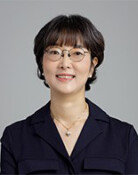Cutting-edge Museum to Open in Southern Seoul Suburb
Cutting-edge Museum to Open in Southern Seoul Suburb
Posted November. 10, 2008 08:25,
The Gwacheon National Science Museum will open Friday afternoon in the southern Seoul suburb, with construction taking two and a half years at a cost of 450 billion won (338 million U.S. dollars).
Located next to Seoul Grand Park, the museum covers 24,397 square meters and has three floors and a basement. The exhibition area covers 19,127 square meters.
The facility also has seven permanent exhibition halls including those on basic sciences, advanced technology and national research and development, one special exhibition hall and eight learning areas.
The museum is three times bigger than the National Science Museum in Daejeon and its exhibition space and scale are world-class.
National Gwacheon Scientorium President Jang Gi-yeol said, It will take two to three days to view all the exhibitions. We aim to attract more than two million visitors every year.
A large globe two meters in diameter hangs from the middle of the ceiling in a capacious room covering 92.46 square meters and 4.5 meters in height. As the lights go out, the globe transforms into the earth.
Welcome to the natural history exhibition hall of the Gwacheon National Science Museum. This is the earth that Koreas first female astronaut Lee So-yeon looked down on from space.
The Science on a Sphere installed in the natural history hall was developed by the Earth System Research Laboratory of the U.S. National Oceanic and Atmospheric Administration. The Gwacheon museum is the first outside of the United States to have the global display system.
Four projectors built in right angles to one another shoot different images onto the globe to display the earth. The globe is fixed but looks like it is rotating.
The museums natural history team chief Lee Jeong-gu said, Around 100 images are in 3D based on recent data including continental shifts over the past 600 million years, changes in sea level and temperature, and the level of pollutants released by each country. Thanks to IT advances, new data is updated more quickly than in the U.S.
In the earth lab of the basic sciences hall, visitors can board the motion simulator to experience an earthquake with magnitude 9.0, which is stronger than this years Sichuan earthquake in China (7.9). Real-time video calls with scientists at the King Sejong Base on King George Island in Antarctica Tuesday mornings are possible with online reservation.
A miniature model of the International Space Station that astronaut Lee visited in April is exhibited in the advanced technology hall. Space toilets, sleeping bags and space meals are displayed here.
Koreas largest optical celestial projector and digital dome imaging device with a screen diameter of 25 meters can be found in outdoor exhibitions, as well as in the ecological learning area and the science sculpture park.
A museum staff member said, On display at the museum are 4,203 exhibits on 685 themes. Visitors can touch and operate 51.6 percent of the exhibits.
The number of researchers lags far behind the number and scale of the exhibitions, with 23 researchers to plan new displays and explain exhibitions to visitors.
President Jang said, More staff will be hired if service is found to be lacking and when displays are updated in two to three years time.
Admission to the museum is 2,000 won (1.50 dollars) for visitors under 21 and double for those over that age, but entrance is free through the end of the year. For more information, call at 02-3677-1500 or visit www.scientorium.go.kr.
sohyung@donga.com







